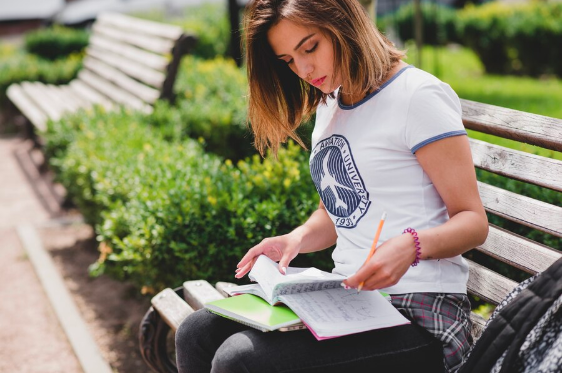From Concept to Fabric: Unveiling the Magic of Screen Prints for Shirts and How to Craft Unique Wearable Art

In the realm of wearable art, screen printing stands as a time-honored technique for transforming fabric into personalized masterpieces. From vibrant graphics to intricate patterns, screen prints adorn shirts with unique designs that capture attention and express individuality. In this article, we delve into the process of screen printing for shirts, uncovering the magic behind this versatile technique and offering insights into crafting one-of-a-kind wearable art.
Understanding Screen Printing
Screen printing, also known as silk screening, is a printing technique that involves transferring ink onto fabric through a fine mesh screen. Each color in the design requires a separate screen, allowing for precise registration and vibrant color reproduction. Screen prints for shirts are valued for its versatility, durability, and ability to produce high-quality prints on various materials, including cotton, polyester, and blends.
Key Components of Screen Printing:
- Screen: A fine mesh screen, typically made of polyester or nylon, serves as the foundation for the printing process. The screen is coated with a light-sensitive emulsion that hardens when exposed to light, creating a stencil of the desired design.
- Squeegee: A squeegee is used to force ink through the openings in the screen and onto the fabric. The angle, pressure, and speed of the squeegee determine the amount of ink deposited and the quality of the print.
- Ink: Screen printing ink comes in various formulations, including water-based, plastisol, and discharge. Each type of ink offers unique properties in terms of opacity, color vibrancy, and compatibility with different fabrics.
- Design: The design to be printed is transferred onto the screen using a photographic process or hand-drawn directly onto the screen. Each color in the design requires a separate screen to achieve multi-color prints.
The Screen Printing Process
The screen printing process involves several steps, from design preparation to final curing, to ensure precise and consistent results. While the exact workflow may vary depending on the complexity of the design and the equipment used, the fundamental steps remain consistent:
Step-by-Step Process:
- Design Preparation: Begin by preparing the design artwork digitally or manually. Convert the design into separate color layers, each representing a different screen for printing.
- Screen Preparation: Coat the screens with a light-sensitive emulsion and allow them to dry in a darkroom. Once dry, expose the screens to UV light with the design artwork placed on top, creating a stencil of the design on the screen.
- Printing Setup: Set up the printing press with the prepared screens, aligning them accurately to ensure proper registration of colors. Secure the fabric to the printing board or platen, ready for printing.
- Ink Mixing: Prepare the ink colors according to the Pantone matching system or custom color specifications. Adjust the ink viscosity and consistency as needed for optimal printing results.
- Printing: Load the ink onto the screen and flood the design area with ink using a squeegee. Apply even pressure while pulling the squeegee across the screen to transfer the ink onto the fabric. Repeat the process for each color layer, allowing adequate drying time between prints.
- Curing: Once the printing is complete, cure the printed garments using a heat source such as a conveyor dryer or heat press. Curing ensures the ink bonds with the fabric and achieves maximum durability and wash-fastness.
- Finishing Touches: Trim excess threads, inspect the prints for quality and consistency, and fold or package the finished garments for distribution or sale.
Crafting Unique Wearable Art with Screen Prints
Screen printing offers endless creative possibilities for crafting unique wearable art that reflects individual style and personality. Whether you’re designing custom t-shirts, hoodies, or tote bags, consider the following tips to elevate your screen printing projects:
Read also: The Evolution of CNC Router Technology: How 5 Axis Router is Revolutionizing the Industry?
Design Tips:
- Start with a Strong Concept: Begin with a clear concept or theme for your design, whether it’s inspired by nature, pop culture, or personal experiences. Brainstorm ideas and sketches to refine your vision before translating it into a screen print.
- Experiment with Color and Texture: Explore different color combinations and ink types to add depth and texture to your designs. Consider using specialty inks such as metallics, fluorescents, or glitter for added visual impact.
- Embrace Hand-Drawn Elements: Incorporate hand-drawn illustrations, lettering, or patterns into your designs to infuse them with authenticity and character. Experiment with brush strokes, linework, and textures to create dynamic visuals.
- Layering and Overprinting: Experiment with layering and overprinting techniques to create depth and complexity in your designs. Combine translucent and opaque inks to achieve unique color effects and visual interest.
- Play with Placement and Scale: Consider the placement and scale of your design elements to create visual balance and focal points. Experiment with oversized prints, asymmetric compositions, and unconventional placements for added impact.
Advantages of Screen Printing for Shirts
Screen printing offers several advantages that make it a preferred choice for creating custom shirts and wearable art:
Benefits of Screen Printing:
- Vibrant Colors: Screen printing produces vibrant, opaque colors that stand out on fabric, ensuring your designs make a bold statement.
- Durability: Screen prints are highly durable and resistant to fading, cracking, and peeling, making them ideal for everyday wear and repeated washing.
- Versatility: Screen printing can be applied to a wide range of fabrics, including cotton, polyester, blends, and even specialty materials such as nylon and canvas.
- High-Quality Results: With proper setup and execution, screen printing delivers consistent, high-quality results with sharp detail and color accuracy.
- Cost-Effectiveness: Screen printing is cost-effective for producing medium to large quantities of shirts, making it a popular choice for businesses, events, and promotional merchandise.
Conclusion
Screen printing for shirts is more than just a printing technique; it’s a form of artistry that allows individuals to transform fabric into unique wearable masterpieces. By understanding the screen printing process, experimenting with design elements, and embracing creativity, you can craft custom shirts that reflect your personality, style, and vision. Whether you’re printing for yourself, your brand, or your community, screen printing offers endless possibilities for creating personalized wardrobe statements that leave a lasting impression.




